20 Great Places to Retire in Tax-Friendly States
Not to be too grim, but as you're approaching retirement, you need to think seriously about the only two certainties in this world: death and taxes.


Not to be too grim, but as you're approaching retirement, you need to think seriously about the only two certainties in this world: death and taxes. On the bright side, you can do a number of things to minimize your tax bill under the new tax law—and one potentially big tax-saving move is to move in retirement. The tax situation in every state varies and can make a big impact on any budget, particularly for people living on a fixed income. To help retirees sort through the differences, Kiplinger has mapped out a state-by-state guide to taxes, classifying each state based on its treatment of retiree finances from least tax-friendly to most tax-friendly.
We also pinpointed 50 great retirement destinations in the U.S.—one in each state—that all offer other attractive advantages for retirees, such as living costs, safety, median incomes and poverty rates for retirement-age residents, as well as residents’ sense of well-being and the availability of recreational and health care facilities. These are the places to retire we picked in each of the 20 states that we've deemed either tax-friendly or most tax-friendly for retirees. They're literally all over the map, so you're bound to find at least one spot to suit your retirement lifestyle.
Disclaimer
The list is ordered alphabetically by state. See "How We Picked the Best Places to Retire" at the end of the list for details on our data sources and methodology.

Huntsville, Ala.
- Population: 440,230
- Share of population 65+: 13.7% (U.S.: 14.5%)
- Cost of Living: 4.7% below the national average
- Average Income for Households 65+: $52,469 (U.S.: $53,799)
- Community Score: 63.3 (U.S.: 61.9)
- State's Tax Rating for Retirees: Tax Friendly
As one of the 10 Cheapest States Where You'll Want to Retire, the Heart of Dixie boasts many great spots for affordable living. And Huntsville, in northern Alabama, is one of the best. It offers all the low-cost, low-tax advantages as the rest of the state, but adds more generous incomes among retirement-age residents. The average household income for 65+ households in Alabama is $44,934.
Home to NASA's Marshall Space Flight Center, the Redstone Arsenal and the Huntsville campus of the University of Alabama, the city offers a robust economy and a highly educated population. There are plenty of cultural attractions, from a sculpture trail to a symphony orchestra, as well as opportunities for outdoor recreation (think bass fishing).

Anchorage, Alaska
- Population: 398,000
- Share of population 65+: 9.1%
- Cost of Living: 28.4% above the national average
- Average Income for Households 65+: $62,651
- Community Score: 62.1
- State's Tax Rating for Retirees: Most Tax Friendly
Older folks don't seem too interested in facing the Last Frontier in retirement. Only 9.1% of the entire state's population is age 65 and up compared with 14.5% of the whole U.S. But if you crave adventure—and don't mind long winters and vast swaths of wilderness—it pays to live in Alaska. Literally. A state fund fueled by oil wealth gives all permanent residents an annual dividend. In 2017, the payment was $1,100 per person.
And residents could certainly use the extra cash. Living costs throughout Alaska are significantly higher than is typical across the continental U.S. But Anchorage is the least expensive metro area in the state. Plus, being the largest city in Alaska, it offers more amenities including numerous theaters, museums and shopping centers, on top of all the outdoor recreation you'd expect. It also has an abundance of health care facilities, more than 43 establishments per 1,000 seniors in the metro area compared with just 19 per 1,000 seniors in the U.S.
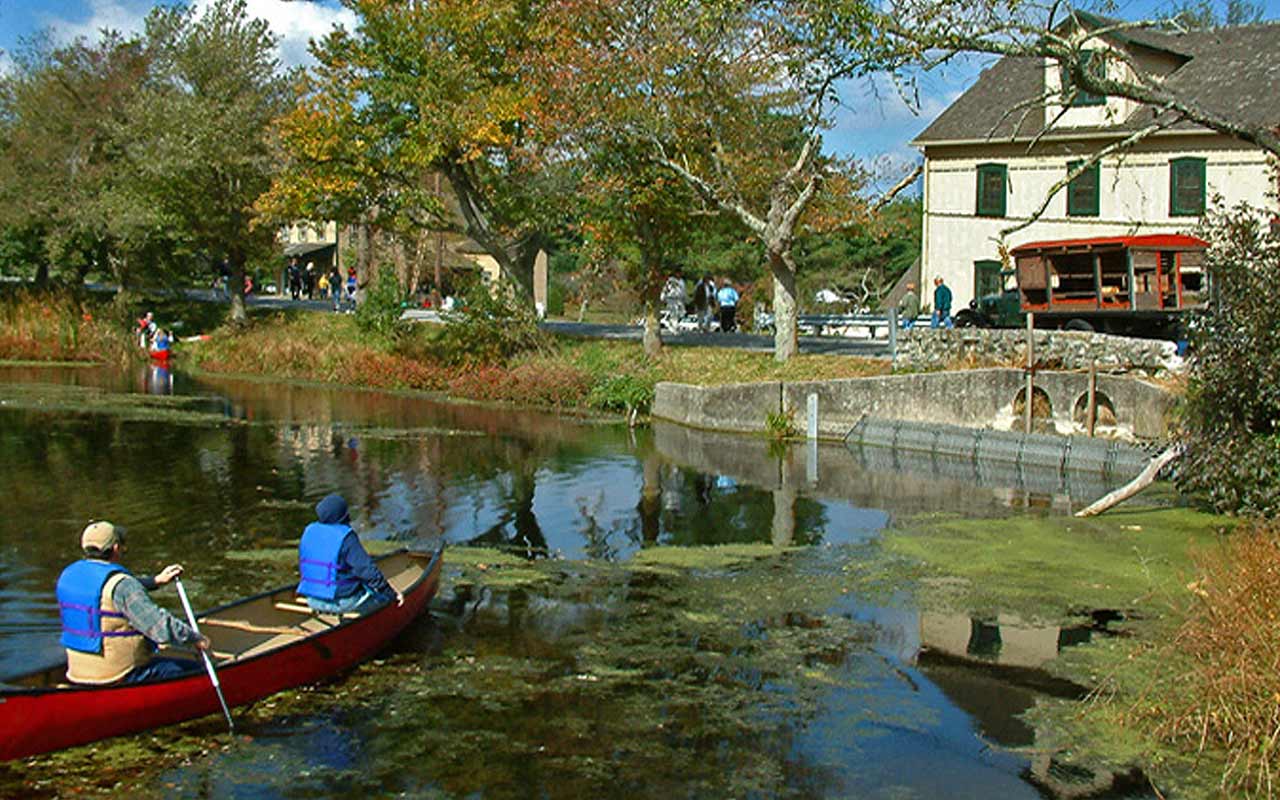
Milford, Del.
- Population: 11,075
- Share of population 65+: 19.5%
- Cost of Living: 0.8% below the national average*
- Average Income for Households 65+: n/a
- Community Score: n/a
- State's Tax Rating for Retirees: Tax Friendly
If you're thinking about heading to one of Delaware's popular beach towns for retirement, brace yourself for sticker shock. Better yet, consider instead the more affordable Milford. About 40 miles north of Bethany Beach, Milford has a median home value of $174,900, well below the median of $477,900 in Bethany Beach, according to Zillow.
The small inland city is about 10 miles from Slaughter Beach. You can also enjoy some waterfront views in town along the Mispillion River. Downtown, there are numerous restaurants and boutiques, as well as the Milford Museum and the Riverfront Theater, where you can watch old movies. A community theater group, the Second Street Players, also performs there.
*Provided by Sperling's Best Places.
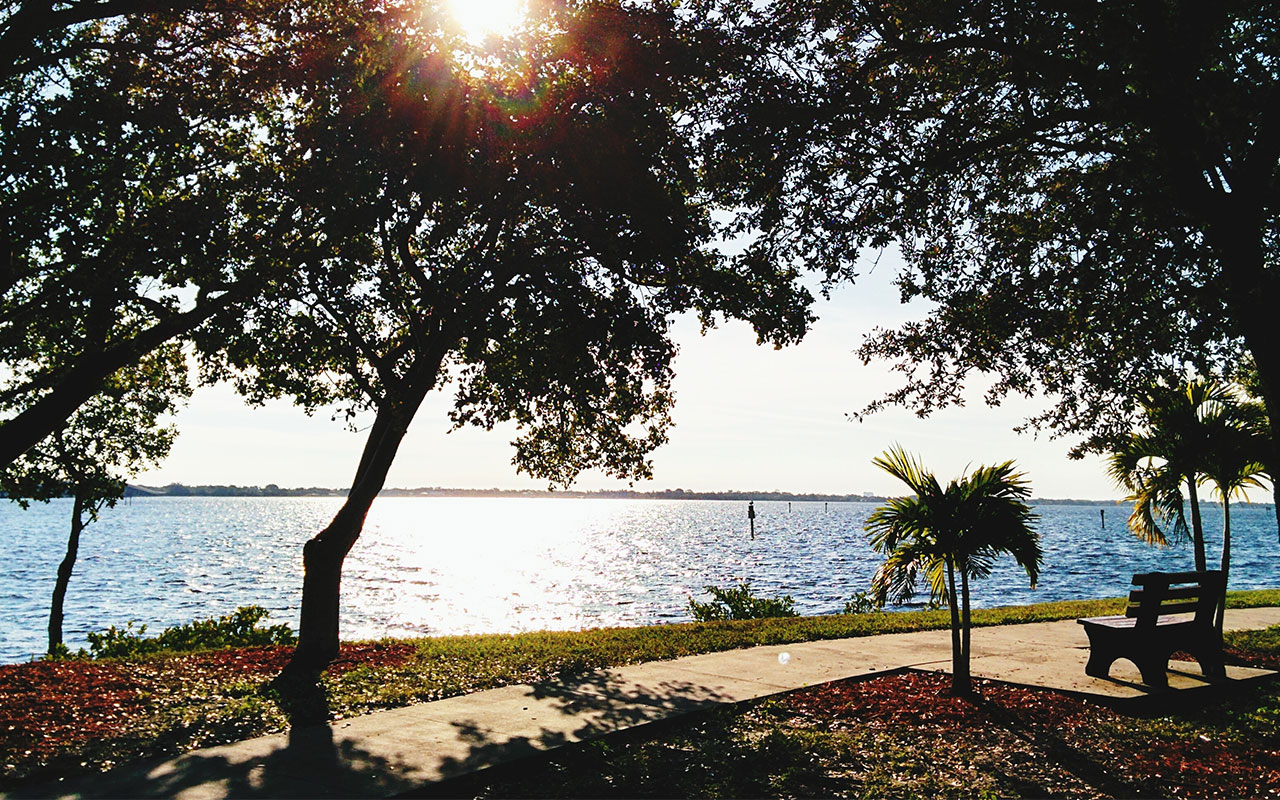
Cape Coral, Fla.
- Population: 680,970
- Share of population 65+: 26.3%
- Cost of Living: 6% below the national average
- Average Income for Households 65+: $50,143
- Community Score: 64.8
- State's Tax Rating for Retirees: Most Tax Friendly
With its desirable climate and favorable tax status, Florida is filled with popular retirement destinations. Many of our favorite retirement spots in the Sunshine State can be found along the Gulf Coast including St. Petersburg, Sarasota and Punta Gorda.
Cape Coral's metro area includes Fort Myers, yet another great place to consider for your retirement. But Cape Coral (city population: 183,365) is unique in its waterway access, offering 400 miles of canals for all your boating, fishing and water sports dreams. And land lovers can enjoy the area's beaches, golfing, tennis, parks and other recreational offerings.
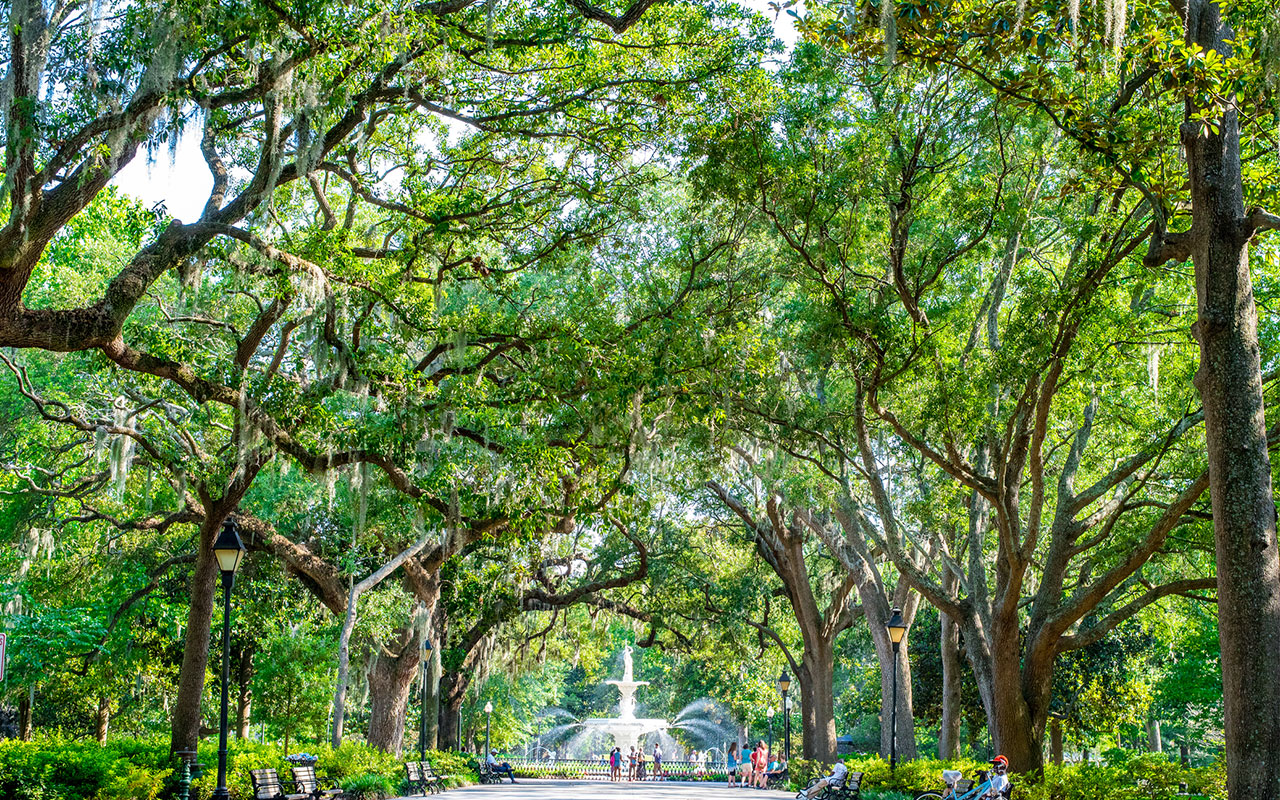
Savannah, Ga.
- Population: 372,569
- Share of population 65+: 12.8%
- Cost of Living: 10.2% below the national average
- Average Income for Households 65+: $44,648
- Community Score: 60.4
- State's Tax Rating for Retirees: Most Tax Friendly
With its warm weather and low living costs, Georgia ranks third among our Best States for Retirement. The only two states to rate higher than Georgia for retirees are Hawaii and (surprisingly) South Dakota.
Savannah (city population: 146,444) is particularly peachy. The historic Georgia city offers beautiful sights, just right for strolling through retirement, including classic American architecture, town squares and riverfront views. Tybee Island, with its wide beaches and still-operating lighthouse, is just a 20-minute drive east of the city. You can also enjoy an array of restaurants, museums and theaters, particularly in downtown Savannah.

Hilo, Hawaii
- Population: 193,680
- Share of population 65+: 17.6%
- Cost of Living: 45.8% above the national average
- Average Income for Households 65+: $57,916
- Community Score: n/a
- State's Tax Rating for Retirees: Tax Friendly
Hawaii is well known for its beautiful beaches, enviable climate and high prices. If you're hoping to retire in paradise, you can do so more affordably on the Big Island compared with Oahu, home of capital city Honolulu, where retiree living costs are 88.0% above the U.S. average. The median home value in Hilo is $298,500—still pricey, to be sure, compared with the U.S. median of $184,700, but much more reasonable than the $602,700, median in Honolulu.
And the local lifestyle is still priceless. The colonial town's mood is quiet and calm, but its location on the eastern coast of the island and near active volcano Mauna Loa offers plenty of opportunities for adventure. You can explore rainforests and waterfalls, as well as Hawaii Volcanoes National Park. In the downtown and waterfront areas, enjoy galleries, shops, restaurants and museums, including the Imiloa Astronomy Center.
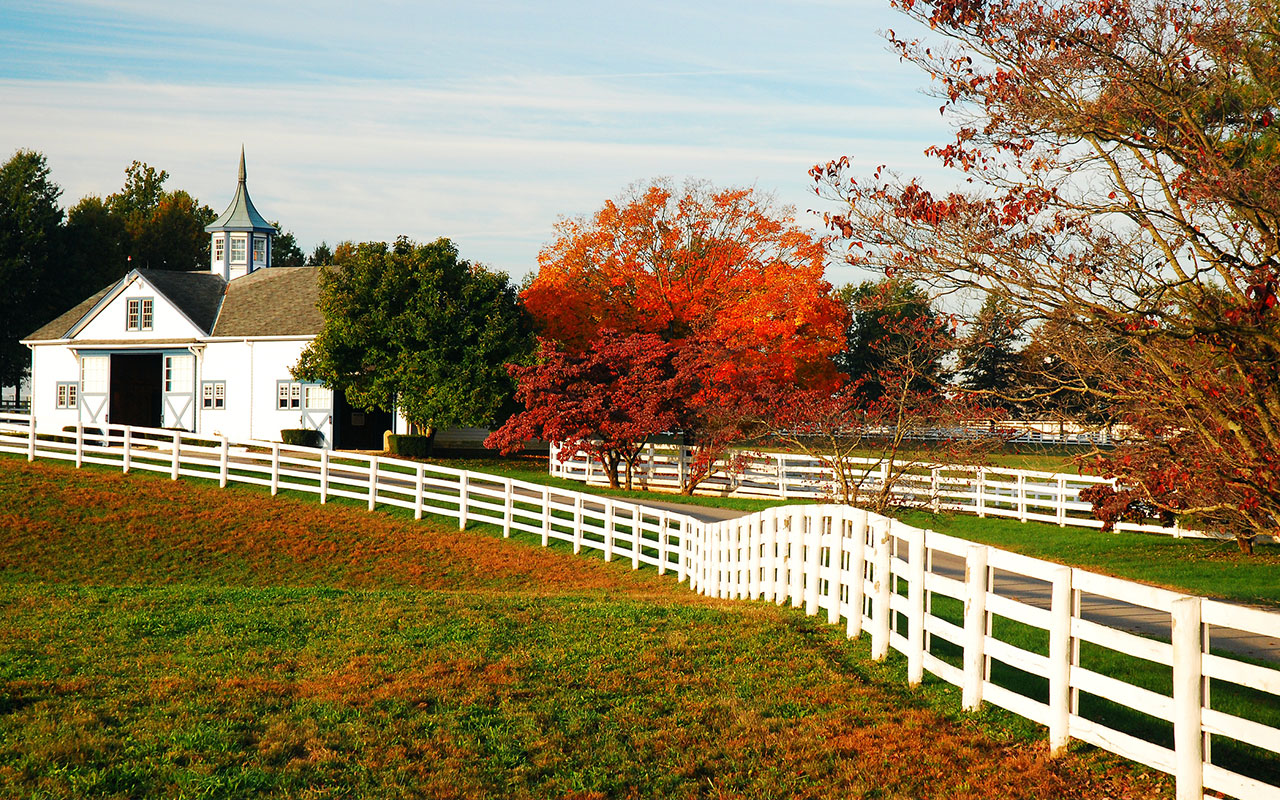
Lexington, Ky.
- Population: 495,193
- Share of population 65+: 12.5%
- Cost of Living: 4.0% below the national average
- Average Income for Households 65+: $52,301
- Community Score: 62.9
- State's Tax Rating for Retirees: Most Tax Friendly
As you'd expect, the Bluegrass State holds plenty of appeal for horse lovers and bourbon aficionados. But retirees can pursue other interests here as well. Lexington has more than 100 parks, six public golf courses and a 734-acre nature preserve with more than 10 miles of hiking trails. For indoor entertainment, check out the numerous galleries and theaters, including the Lexington Opera House and its schedule of ballets, Broadway musicals, comedy shows, operas (of course) and other performances. The University of Kentucky offers the Singletary Center for the Arts, too.
You can also satisfy your academic pursuits at the University of Kentucky. The Osher Lifelong Learning Institute offers various courses, forums, interest groups, trips and events to people age 50 or older; annual membership costs $25. The Donovan Fellowship allows Kentucky residents age 65 and older to take university classes free, space permitting. For all these reasons and more, Lexington ranks among our great college towns for retirement.

Lafayette, La.
- Population: 484,043
- Share of population 65+: 12.5%
- Cost of Living: 9.5% below the national average
- Average Income for Households 65+: $52,059
- Community Score: 62.4
- State's Tax Rating for Retirees: Tax Friendly
If you're craving Cajun and Creole culture, Lafayette is the place to retire. Known as the "Cajun Capital City," the area is rich in history, distinctive foods and two-stepping tunes. Nature lovers can appreciate the area, too, located on the Mississippi Flyway and the Atchafalaya Loop of America's Wetland Birding Trail. Bird watchers have gotten a glimpse of 240 species, so far.
Unfortunately, the area's wealth does not reflect in many older residents' finances. Though the average income for people age 65 and older is just a bit below the national average of $53,799, the poverty rate for the age group is a high 14.1%, compared with 12.9% for the state and 9.3% for the U.S. On the bright side, the metro area has an abundance of health care facilities, with about 27 establishments per 1,000 seniors, compared with just 19 per 1,000 seniors in the U.S.

Jackson, Miss.
- Population: 578,095
- Share of population 65+: 12.8%
- Cost of Living: 11.3% below the national average
- Average Income for Households 65+: $50,801
- Community Score: 57.8
- State's Tax Rating for Retirees: Most Tax Friendly
Low costs and friendly tax policies can make for a sweet retirement in the Magnolia State, and the capital is particularly alluring. Jackson is a surprisingly eclectic city that holds appeal to Civil War buffs, blues music aficionados and even ballet fans. Dancers from around the world flock to Mississippi to compete for medals, scholarships and spots in ballet companies. Similar competitions are held only in Russia, Bulgaria and Finland.
The Milken Institute ranks Jackson eighth among the best large cities for successful aging. On top of its affordability, Jackson offers an abundance of nurses, nurse practitioners and orthopedic surgeons, as well as caregiving option and geriatric facilities. Note, however, that the area's residents are prone to unhealthy habits that you don’t want to pick up in retirement, including low levels of activity and high levels of fast-food dining.

Reno, Nev.
- Population: 443,855
- Share of population 65+: 14.7%
- Cost of Living: 6.8% above the national average
- Average Income for Households 65+: $57,630
- Community Score: 61.2
- State's Tax Rating for Retirees: Most Tax Friendly
Whether or not you like to gamble, retiring to Reno can make you feel like you've hit the jackpot. Boasting a small-town feel with big-city amenities, the locale proclaims itself "The Biggest Little City in the World." And it backs up the claim, offering a downtown full of restaurants, nightclubs, art galleries and music venues, on top of its well-known casinos.
Outdoor enthusiasts also win. The nearby Sierra Nevada mountain range and Lake Tahoe provide ample opportunities for hiking, biking and boating in warm weather, and skiing in winter. You’ll be in good company. Gardnerville Ranchos, a small Nevada town near Lake Tahoe, is home to a surprising number of millionaires who share the same resorts and marinas.
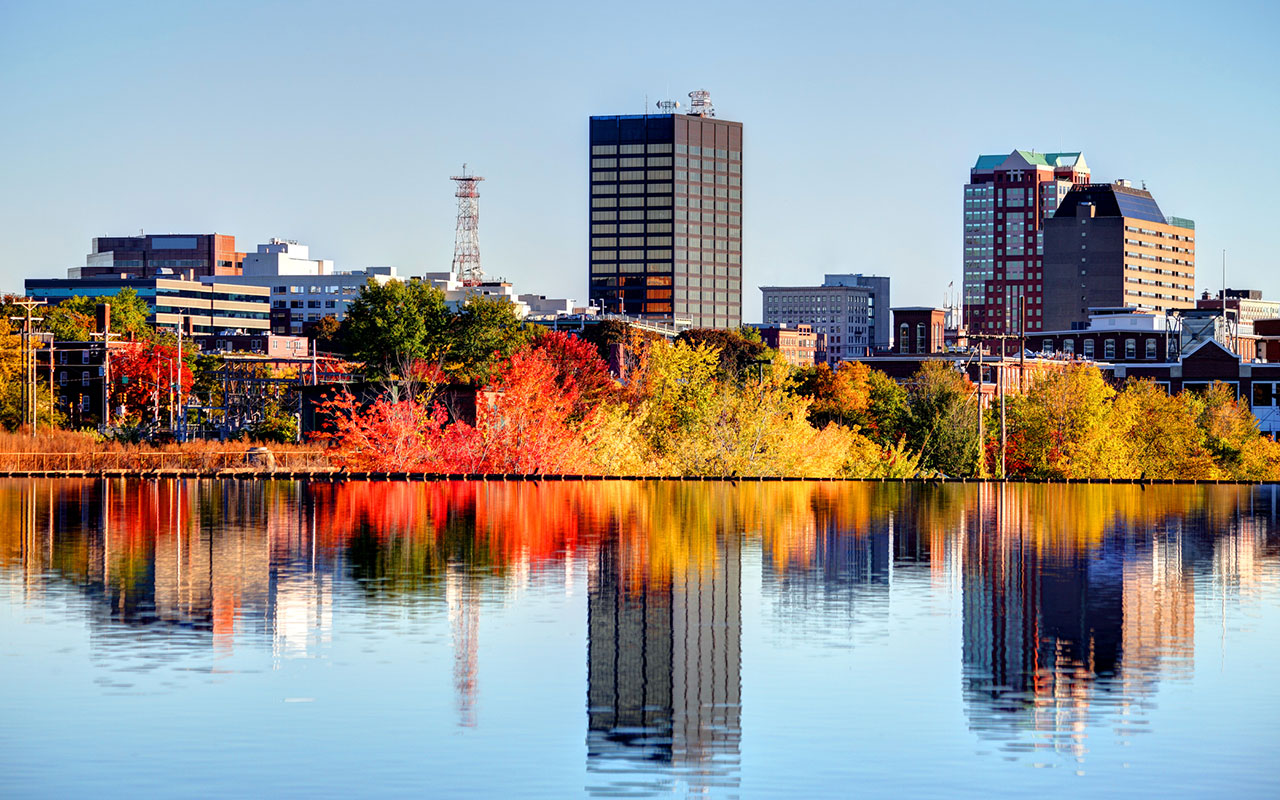
Manchester, N.H.
- Population: 404,948
- Share of population 65+: 13.9%
- Cost of Living: 15.0% above the national average
- Average Income for Households 65+: $56,636
- Community Score: 62.1
- State's Tax Rating for Retirees: Most Tax Friendly
The Manchester metro area, including Nashua, may come with relatively high living costs, but the above-average household incomes help make them manageable. The Granite State's rock-solid tax advantages help, too. It’s a big reason why we recently ranked New Hampshire the ninth best for retirement.
Plenty of amenities make the area appealing to retirees. You can find a nice selection of restaurants in town and plenty of outdoor recreation to enjoy, including nearby snowshoeing, hiking, skiing and just taking in the scenic mountain views. And when you need a big-city escape—the city population of Manchester is just 111,196, after all—Boston is only an hour away.
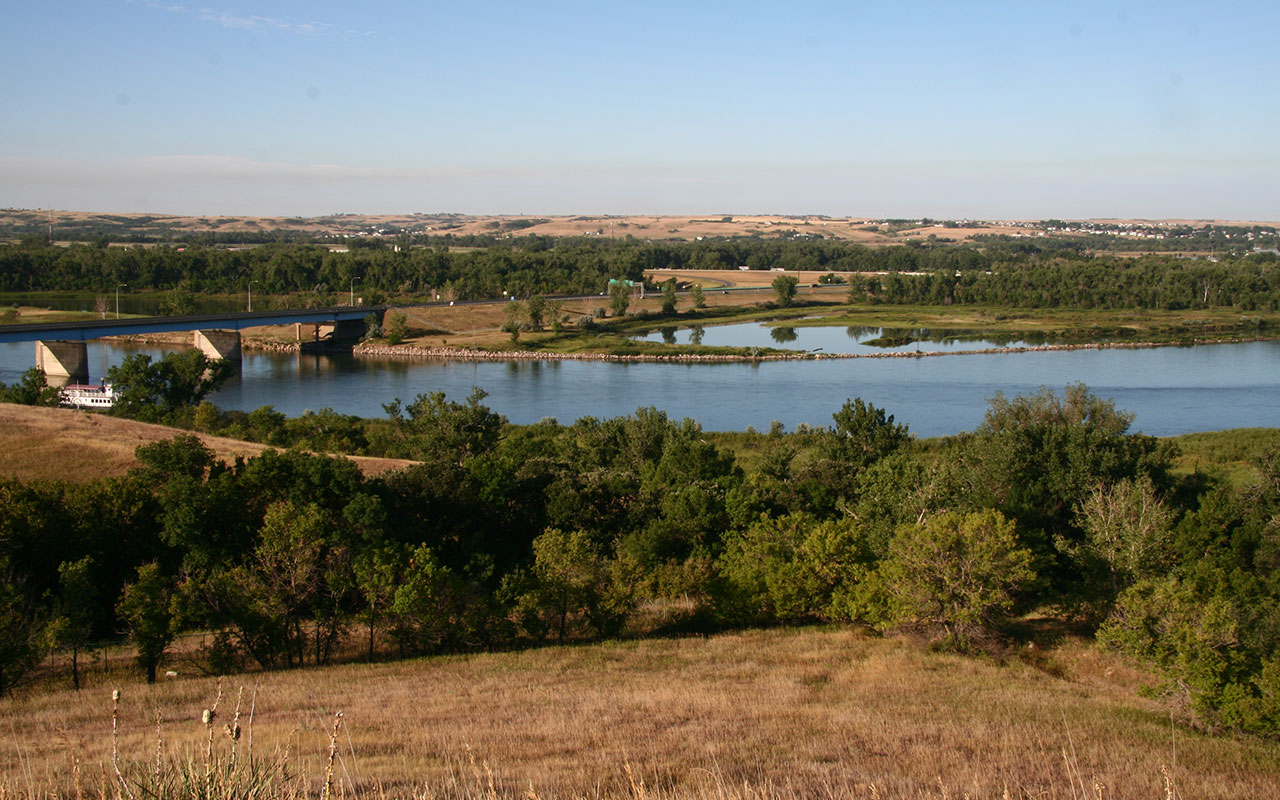
Bismarck, N.D.
- Population: 126,392
- Share of population 65+: 14.4%
- Cost of Living: 1.2% below the national average
- Average Income for Households 65+: $41,598
- Community Score: n/a
- State's Tax Rating for Retirees: Tax Friendly
After ranking all 50 states based on financial factors critical to retirees, North Dakota placed a surprising fourth best in the U.S. for retirement. So if you do make the unorthodox choice to spend your golden years in the Peace Garden State, give serious consideration to Bismarck—especially if you're seeking an encore career. The capital city’s strong economy means plenty of employment opportunities for older adults, particularly in the services sector.
If you're hoping for a more leisurely retirement, there are a number of biking and hiking trails and parks around the city, as well as on the banks of the Missouri River. You can also enjoy cruising, boating, kayaking and canoeing the river during warmer months. Bundle up if you venture out in winter. From December through February, average temperatures in Bismarck are in the teens.

Pittsburgh, Pa.
- Population: 2.4 million
- Share of population 65+: 18.4%
- Cost of Living: 0.4% below the national average
- Average Income for Households 65+: $48,709
- Community Score: 62.5
- State's Tax Rating for Retirees: Most Tax Friendly
The Steel City is a good deal for retirees. Overall living costs are on par with the national average, and the median home value is just $100,800, compared with $167,700 for the state and $184,700 for the nation. Plus, the Keystone State offers some nice tax breaks for retirees—Social Security benefits and most other retirement income are not subject to state taxes.
Despite being light on costs, Pittsburgh is still heavy on attractions. You can enjoy the Andy Warhol Museum, the Pittsburgh Ballet Theatre, a plethora of jazz joints and all the offerings of local universities, which include Duquesne, Carnegie Mellon and the University of Pittsburgh. And if watching all the collegiate and professional sports isn't enough activity for you, you have plenty of opportunities nearby to golf, hunt, fish, bike, hike and boat.
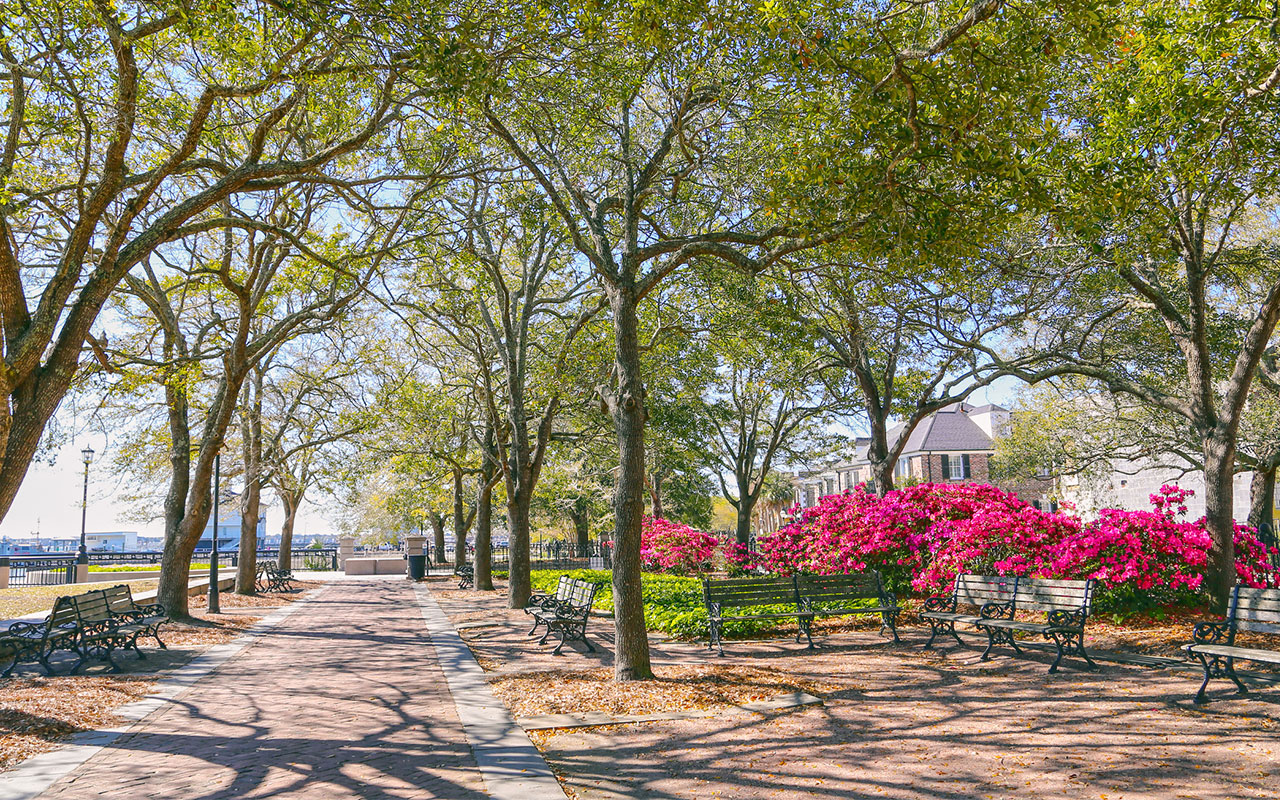
Charleston, S.C.
- Population: 728,271
- Share of population 65+: 13.3%
- Cost of Living: 4.0% above the national average
- Average Income for Households 65+: $52,827
- Community Score: 64.5
- State's Tax Rating for Retirees: Tax Friendly
Southern charm, a rich history, city living and nearby beaches combine to make Charleston a uniquely attractive retirement destination. History buffs, in particular, can appreciate the city's well-preserved antebellum architecture (the Preservation Society of Charleston is the oldest community-based historic preservation group in the country) and Civil War sites, including Fort Sumter.
Foodies, too, can find plenty to enjoy along Charleston’s cobblestone streets, especially in the brunch and comfort food areas. And if you need to work off some of those calories, water sports, including surfing, paddle boarding and kayaking, are popular local activities—along with boating and fishing. The population of the city proper is a manageable 134,875.

Sioux Falls, S.D.
- Population: 247,315
- Share of population 65+: 12.2%
- Cost of Living: 7.0% below the national average
- Average Income for Households 65+: $45,780
- Community Score: n/a
- State's Tax Rating for Retirees: Most Tax Friendly
If you've never considered moving to South Dakota, perhaps you should. We recently ranked it the best state for retirement. And Sioux Falls is a particularly great spot to settle. It is filled with advantages, including a booming economy, low unemployment and hospitals specializing in geriatric services. For all these reasons, plus the city's recreational activities (including regularly scheduled pinochle and pickleball), the Milken Institute dubbed Sioux Falls the 5th best small metro area for successful aging.
And all that comes pretty cheap for retirees. Along with low overall living costs in Sioux Falls, the median home value is $161,500, compared with $184,700 for the U.S. (The median for the state at $146,700.) Plus, the state's tax picture is one of the best for retirees.

Nashville, Tenn.
- Population: 1.8 million
- Share of population 65+: 12.1%
- Cost of Living: 7.9% below the national average
- Average Income for Households 65+: $56,379
- Community Score: 64.6
- State's Tax Rating for Retirees: Tax Friendly
The Volunteer State, which we rank as the fifth-best in the nation for retirement, is a good choice for retiree nest eggs of all sizes. On top of its friendly-tax status, most parts of Tennessee have below-average living costs across the board for retired residents. And Music City couples low costs with above-average incomes, giving you a good shot at a harmonious budget.
Nashville’s vibrant music scene is, of course, a big draw, with more than 180 venues, including the historic Grand Ole Opry, and free live performances every day of the year. But you can also enjoy the abundance of dining options and outdoor recreation.

Austin, Texas
- Population: 1.9 million
- Share of population 65+: 9.5%
- Cost of Living: 7.7% below the national average
- Average Income for Households 65+: $62,940
- Community Score: 64.2
- State's Tax Rating for Retirees: Tax Friendly
There's nothing weird about wanting to retire in Austin. The metro area offers low living costs even while its older residents tend to bring in well-above-average incomes. And the population has the opportunity to be just as healthy as their budgets. A great place to retire for good health, Austin is home to Zilker Park, a 350-acre green space with a 10-mile hiking and biking trail that encircles Lady Bird Lake.
The area also has an abundance of health care facilities, with more than 29 establishments per 1,000 seniors in the metro area compared with just 19 per 1,000 seniors in the U.S. That includes St. David's South Austin Medical Center with specialties including women's health, heart and vascular care, and oncology. In fact, the Milken Institute credits the Austin metro area's sterling health care system and health-minded population as one reason it ranks sixth among the best large cities for successful aging.

Lynchburg, Va.
- Population: 258,062
- Share of population 65+: 17.4%
- Cost of Living: 10.6% below the national average
- Average Income for Households 65+: $38,973
- Community Score: 67.1
- State's Tax Rating for Retirees: Tax Friendly
Take a hike. Really. Retiring in the City of Seven Hills, nestled among the Blue Ridge Mountains and overlooking the James River, outdoorsy types can hike, jog and bike the more than 18 miles of urban trails on the city's 300-acre greenway. And if that's not enough activity for you, Smith Mountain Lake, Wintergreen ski resort and the Appalachian Trail are all within an hour's drive. It's no wonder residents award it some of the top marks in the country for community well-being, reporting high feelings of safety and community pride.
Low living costs are attractive, in general, but in particular as you age. A private room in a Lynchburg nursing home typically costs $83,950 a year, according to Genworth, compared with a whopping $97,455 a year for the U.S.
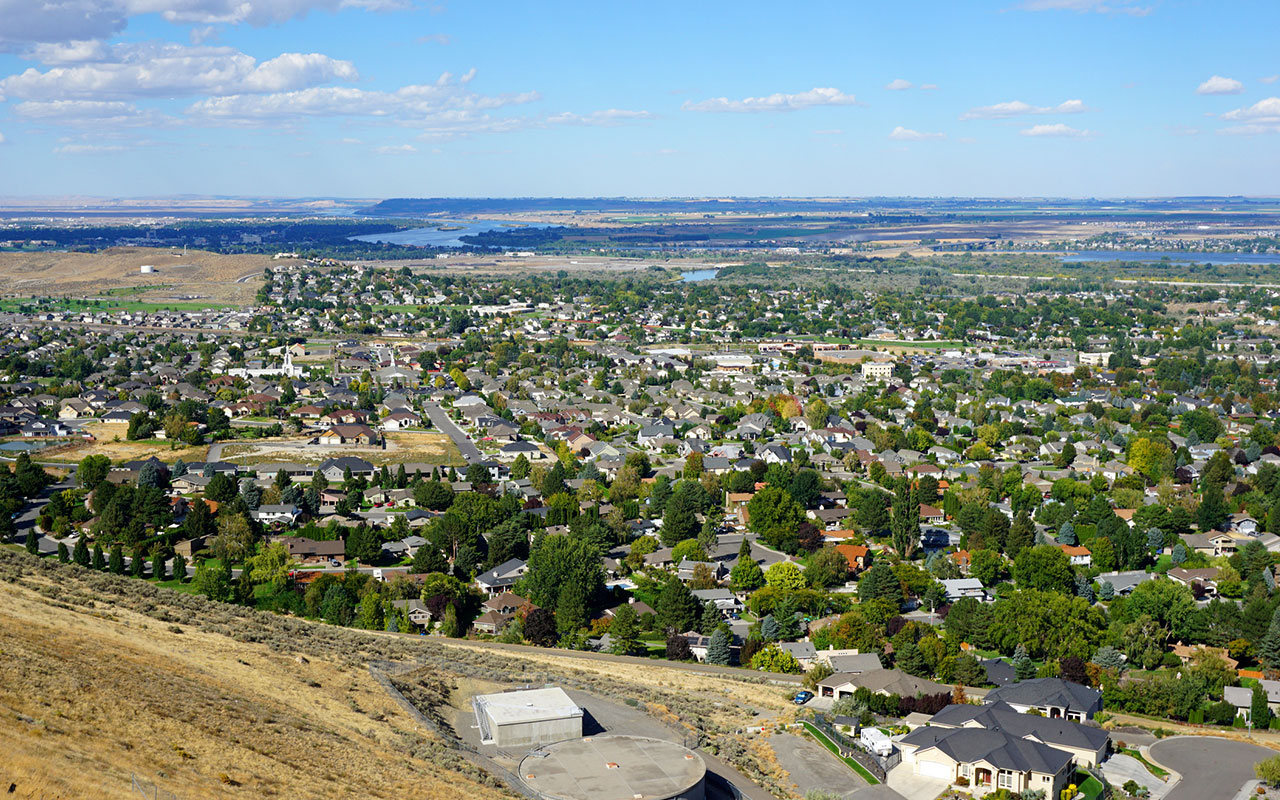
Kennewick, Wash.
- Population: 275,329
- Share of population 65+: 11.7%
- Cost of Living: 3.0% below the national average
- Average Income for Households 65+: $57,179
- Community Score: 65.1
- State's Tax Rating for Retirees: Tax Friendly
This metro area includes Richland and Pasco, all together dubbed the Tri-Cities of Washington State and all qualifying as great retirement destinations. The low cost of living is particularly attractive thanks to above-average incomes among retirement-age residents.
Whether you're partial to exploring the great outdoors or focusing on wine country, you have plenty of options—you don't even have to choose one over the other. You can enjoy boating and fishing on the Columbia, Yakima and Snake Rivers, and hiking or biking on the 23-mile Sacagawea Trail. There are also more than 200 wineries within a 50-mile radius, offering beautiful views and many wines to sample.
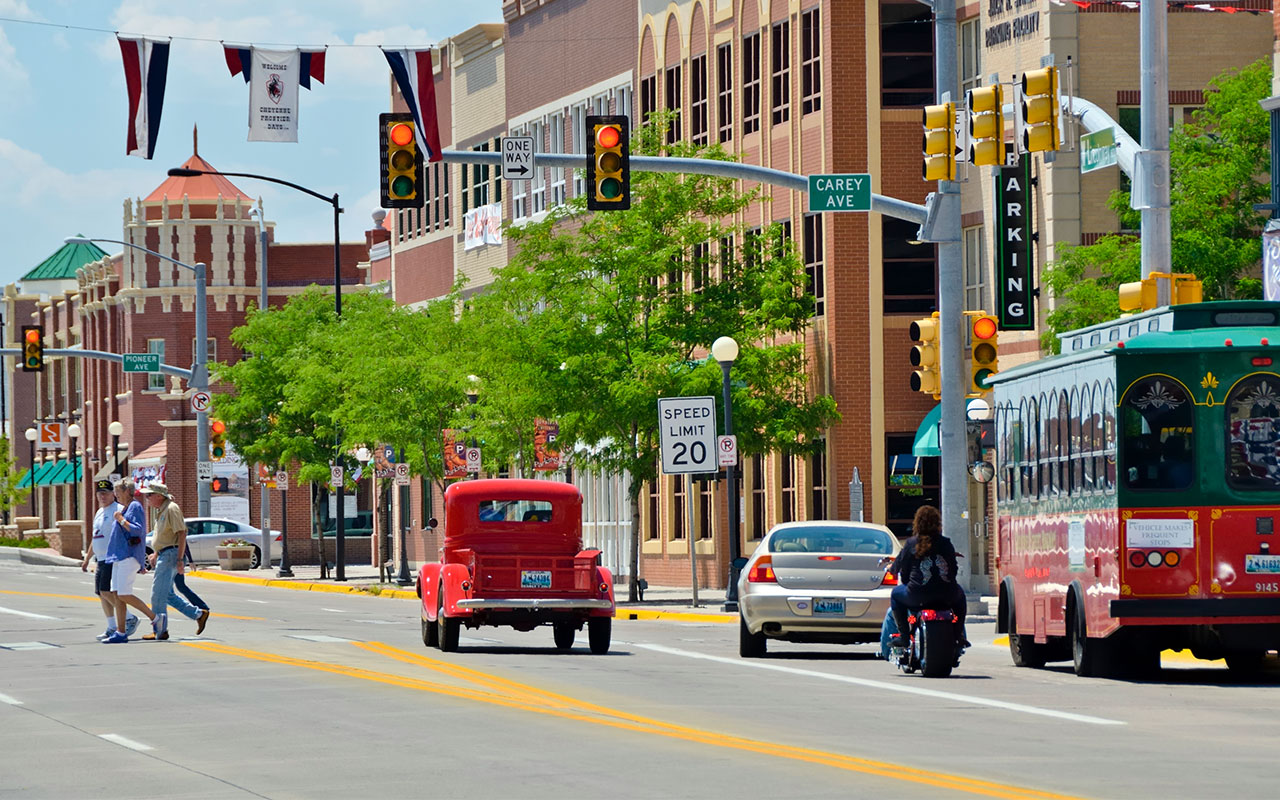
Cheyenne, Wyo.
- Population: 63,624
- Share of population 65+: 14.1%
- Cost of Living: 0.4% below the national average*
- Average Income for Households 65+: $46,399
- Community Score: n/a
- State's Tax Rating for Retirees: Most Tax Friendly
Loner types should love the Cowboy State. It has a population of fewer than 580,000—that's just six people per square mile. (By comparison, the country's smallest state in size, Rhode Island, hosts more than a million people, with more than 1,000 people per square mile.) Even the capital city is relatively small, with just 63,000 or so residents.
The lack of crowds doesn't leave you a lack of activities. You have plenty of outdoor diversions, such as miles of trails for hiking, biking and horseback riding; fishing and boating; and birding and other wildlife viewing. Train aficionados can enjoy the area's railroad history and displays of locomotives, including the world's largest steam engine (also retired). Another big local attraction: Every summer since 1897, Cheyenne hosts the world's largest outdoor rodeo and Western celebration, Frontier Days, now a 10-day event.
*Provided by Sperling's Best Places.

How We Picked the 50 Best Places to Retire
To pinpoint one great retirement destination in each state, we weighed a number of factors:
- Cost of living for major metropolitan and micropolitan statistical areas, with data provided by the Council for Community and Economic Research, includes overall costs—across all age groups—for housing, food and groceries, transportation, utilities, health care and miscellaneous expenses. For select cities, cost-of-living data comes from Sperling's Best Places, as noted.
- Household incomes, poverty rates and number of health care facilities are from the U.S. Census Bureau.
- Community well-being and physical well-being scores are provided by digital health company Sharecare, in collaboration with Gallup. These are two of the five elements of well-being that make up the overall Gallup-Sharecare Well-Being Index. (The other three elements are purpose, social and financial well-being.) The index is calculated on a scale of 0 to 100 and based on more than 2.5 million nationally representative surveys. Community well-being is defined as "liking where you live, feeling safe and having pride in your community." Physical well-being is "having good health and enough energy to get things done daily." We display the community score for each place we chose.
- Population data, including the percentage of the population that is age 65 and older, is also provided by the Census Bureau. The figures, which in almost all cases represent the populations of major metropolitan and micropolitan statistical areas that might include multiple cities, are highlighted in these rankings for the benefit of readers, but were not factors in our methodology for ranking the best places to retire.
- Taxes on retirees, based on Kiplinger's Retiree Tax Map, which divides states into five categories: Most Tax Friendly, Tax Friendly, Mixed, Not Tax Friendly and Least Tax Friendly. This information is provided for the benefit of readers but was not factored into our selections within each state.
See Also: 50 Best Places to Retire in the U.S.
Get Kiplinger Today newsletter — free
Profit and prosper with the best of Kiplinger's advice on investing, taxes, retirement, personal finance and much more. Delivered daily. Enter your email in the box and click Sign Me Up.

Rapacon joined Kiplinger in October 2007 as a reporter with Kiplinger's Personal Finance magazine and became an online editor for Kiplinger.com in June 2010. She previously served as editor of the "Starting Out" column, focusing on personal finance advice for people in their twenties and thirties.
Before joining Kiplinger, Rapacon worked as a senior research associate at b2b publishing house Judy Diamond Associates. She holds a B.A. degree in English from the George Washington University.
-
 Should You Do A Roth IRA Conversion? Nine Things to Consider
Should You Do A Roth IRA Conversion? Nine Things to ConsiderThe Tax Letter Thinking of converting a traditional IRA to a Roth IRA? The Kiplinger Tax Letter Editor highlights nine factors you should consider before making a move.
By Joy Taylor
-
 33 Stocks That Could Rally 50% or More This Year
33 Stocks That Could Rally 50% or More This YearAnalysts say these S&P 500 stocks have at least 50% price upside over the next year or so.
By Dan Burrows
-
 What to Do With Your Tax Refund: 6 Ways to Bring Growth
What to Do With Your Tax Refund: 6 Ways to Bring GrowthUse your 2024 tax refund to boost short-term or long-term financial goals by putting it in one of these six places.
By Rachael Green
-
 What Does Medicare Not Cover? Eight Things You Should Know
What Does Medicare Not Cover? Eight Things You Should KnowHealthy Living on a Budget Medicare Part A and Part B leave gaps in your healthcare coverage. But Medicare Advantage has problems, too.
By Donna LeValley
-
 12 Great Places to Retire in the Midwest
12 Great Places to Retire in the MidwestPlaces to live Here are our retirement picks in the 12 midwestern states.
By Stacy Rapacon
-
 10 Cheapest Small Towns to Live In
10 Cheapest Small Towns to Live InThe cheapest small towns might not be for everyone, but their charms can make them the best places to live for plenty of folks.
By Dan Burrows
-
 15 Reasons You'll Regret an RV in Retirement
15 Reasons You'll Regret an RV in RetirementMaking Your Money Last Here's why you might regret an RV in retirement. RV-savvy retirees talk about the downsides of spending retirement in a motorhome, travel trailer, fifth wheel or other recreational vehicle.
By Bob Niedt
-
 The Cheapest Places To Retire in the US
The Cheapest Places To Retire in the USWhen you're trying to balance a fixed income with an enjoyable retirement, cost of living is a crucial factor to consider.
By Stacy Rapacon
-
 The Six Best Places to Retire in New England
The Six Best Places to Retire in New Englandplaces to live Thinking about a move to New England for retirement? Here are the best places to land for quality of life, affordability and other criteria.
By Stacy Rapacon
-
 13 Smart Estate Planning Moves
13 Smart Estate Planning Movesretirement Follow this estate planning checklist for you (and your heirs) to hold on to more of your hard-earned money.
By Janet Kidd Stewart
